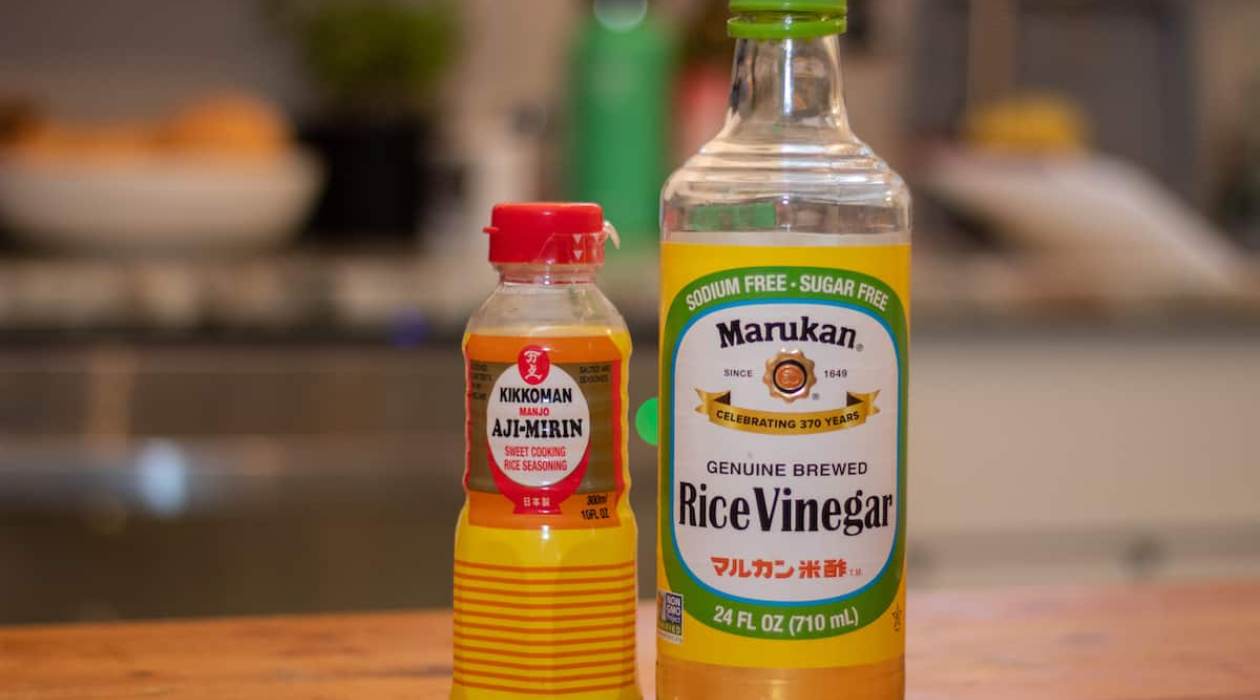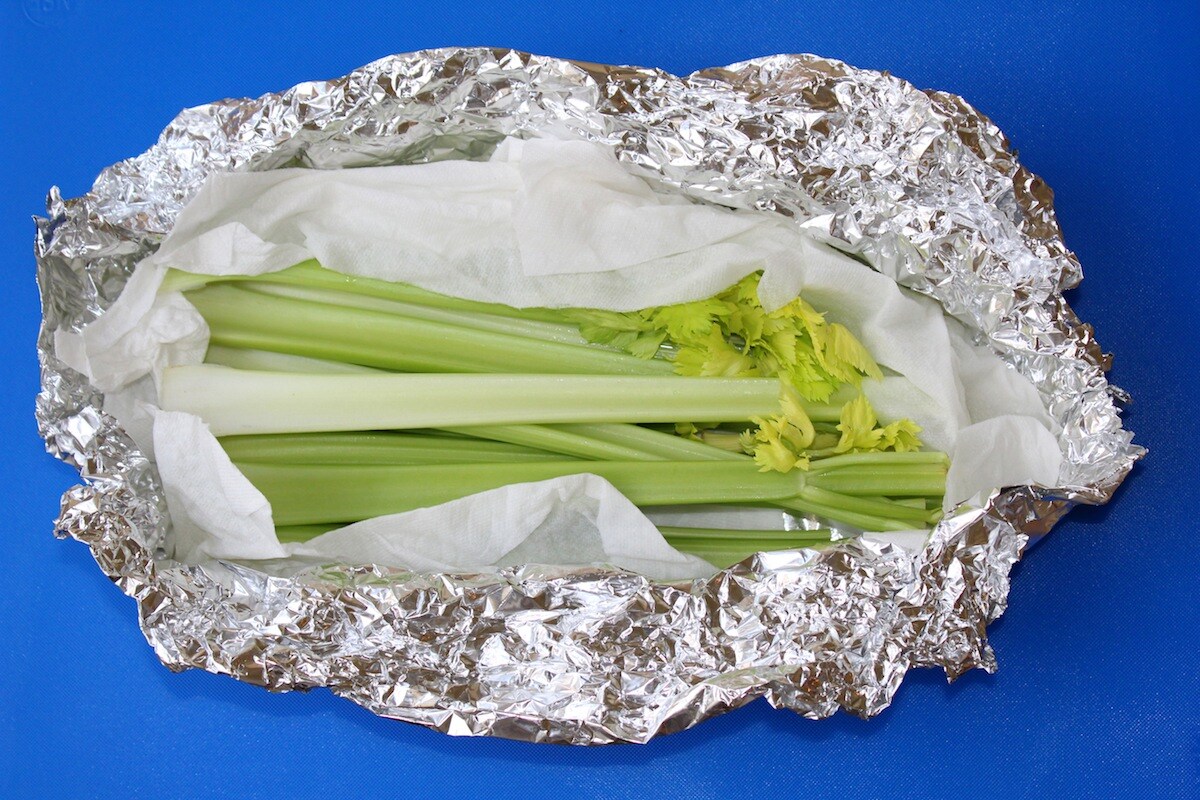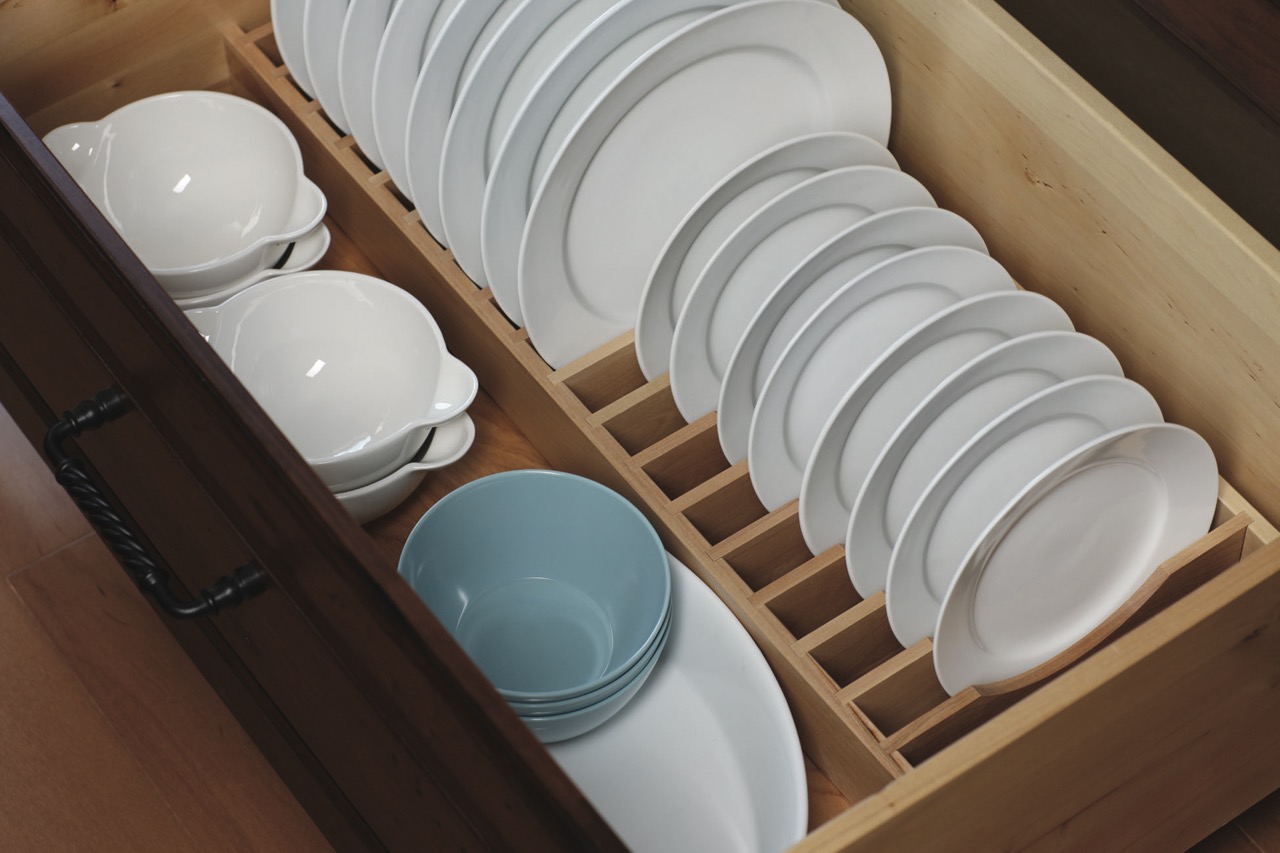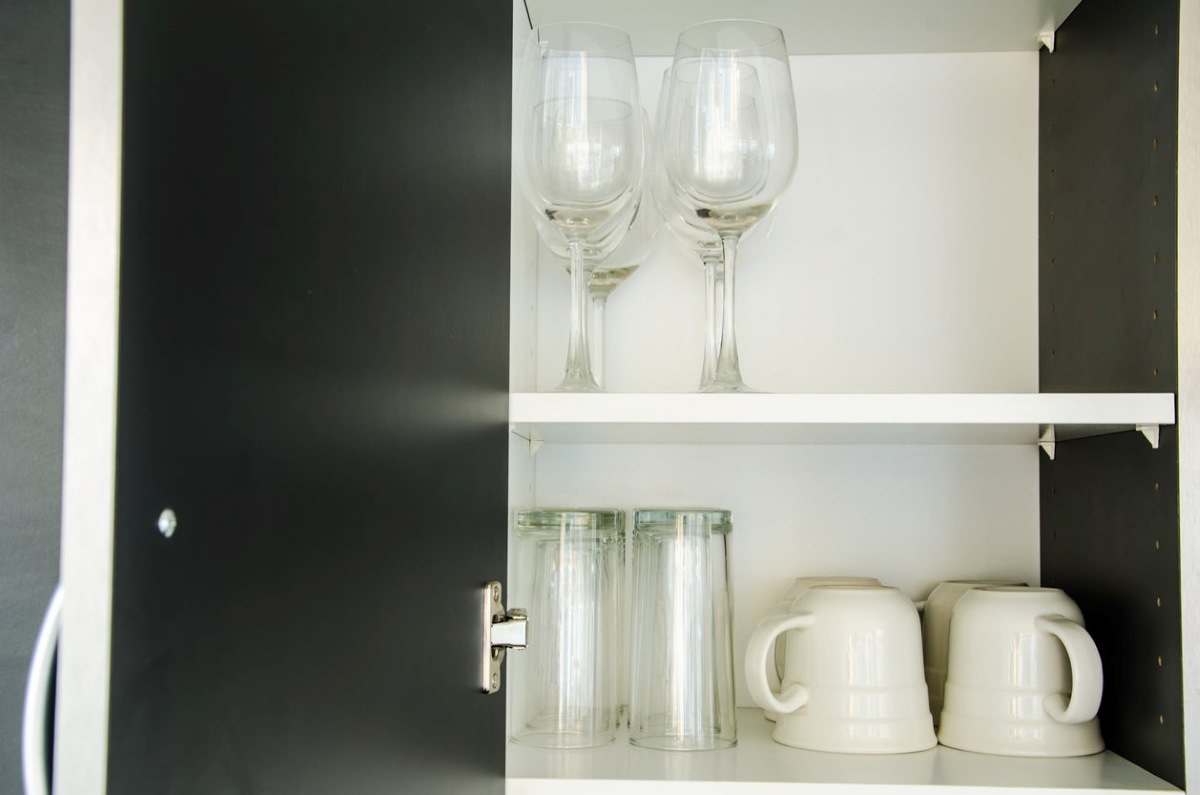

Articles
How To Store Mirin
Modified: January 6, 2024
Discover the best techniques and tips for storing mirin in this comprehensive guide. Preserve the quality and flavor of your mirin with our expert advice.
(Many of the links in this article redirect to a specific reviewed product. Your purchase of these products through affiliate links helps to generate commission for Storables.com, at no extra cost. Learn more)
Introduction
Welcome to the world of culinary delights, where the aroma and flavors of different ingredients come together to create amazing dishes. One such ingredient that adds a unique taste and depth to various recipes is mirin. But what exactly is mirin, and why is proper storage important?
Mirin is a traditional Japanese condiment made from fermented rice. It has a sweet and tangy flavor, making it a popular choice in Asian cuisine, especially in dishes like teriyaki, sauces, marinades, and glazes. Its distinct taste and versatility have made it a staple in many kitchens around the world.
While mirin is a delightful addition to any recipe, its quality and taste can be compromised if not stored properly. The right storage methods play a crucial role in maintaining the freshness, flavor, and overall quality of mirin. Whether you have a small bottle of mirin or a larger amount, following the correct storage practices will ensure that it stays in its prime condition.
In this article, we will explore the factors to consider for proper mirin storage, including temperature control, light exposure, air and moisture exposure, and choosing the right storage container. We will also discuss different storage methods, such as storing mirin in the pantry, refrigerating mirin, and even freezing mirin for long-term storage. By the end, you’ll have all the knowledge you need to store your mirin properly and ensure its freshness for your culinary adventures.
Key Takeaways:
- Proper storage of mirin is crucial to preserve its unique sweet and tangy flavor, extend its shelf life, and maintain its aromatic qualities. By considering factors such as temperature control, light exposure, and air and moisture exposure, you can ensure that your mirin remains fresh and flavorful for an extended period.
- Storing mirin in the pantry, refrigerating it, and even freezing it for long-term storage are viable options to preserve its quality. By choosing the right storage container, monitoring temperature, and being mindful of texture changes, you can enjoy the full flavor and benefits of mirin in your culinary endeavors.
Read more: How To Store Basil From Store
What is Mirin?
Mirin is a traditional Japanese condiment that has been used in cooking for centuries. It is made from fermented rice, similar to sake, but with a lower alcohol content and a sweeter taste. Mirin is known for its unique flavor profile, which adds depth and complexity to dishes.
The production process of mirin involves fermenting rice with koji, a type of fungus that breaks down starches into sugars. This koji rice is then mixed with steamed glutinous rice and left to ferment for several months. During the fermentation process, natural enzymes convert the starches in the rice into sugars, giving mirin its characteristic sweet taste.
There are two main types of mirin: hon-mirin (true mirin) and shin-mirin (sweet cooking seasoning). Hon-mirin is made using traditional methods and has a higher alcohol content. It is considered authentic mirin and is prized for its rich flavor. Shin-mirin, on the other hand, is a modern variant that contains less alcohol and is often used as a substitute for hon-mirin in cooking.
Mirin is widely used in Japanese cuisine for its ability to enhance flavors and balance out savory or salty dishes. It not only provides sweetness but also acts as a natural tenderizer, adding a glossy finish and helping to caramelize sauces and glazes. From teriyaki chicken to stir-fried vegetables and even sushi rice, mirin is a versatile ingredient that can elevate a wide range of dishes.
In addition to its culinary uses, mirin also has cultural significance in Japan. It is often used in traditional New Year dishes, as well as in celebratory meals and special occasions. Mirin is considered a staple in Japanese households, and its presence in the kitchen is a testament to the country’s rich culinary heritage.
Now that we have a better understanding of what mirin is, let’s explore why proper storage is important to preserve its quality and flavor.
Why is Proper Storage Important?
Proper storage of mirin is crucial to maintain its quality, flavor, and overall freshness. While mirin has a long shelf life, exposure to certain elements can affect its taste and aroma, diminishing its culinary impact. Here are a few reasons why proper storage is important for mirin:
1. Preserving Flavor: Mirin is prized for its unique sweet and tangy flavor. Proper storage helps preserve the delicate balance of flavors in mirin, ensuring that it retains its characteristic taste. Exposure to excessive heat, light, or air can alter the flavor profile, resulting in a less enjoyable culinary experience.
2. Extending Shelf Life: While mirin can last for a long time, proper storage practices can help extend its shelf life even further. By minimizing exposure to factors such as heat, light, and air, you can prevent the degradation of mirin and enjoy its freshness for a longer period.
3. Preventing Oxidation: Oxidation is a natural process that occurs when a substance comes into contact with air. When mirin is exposed to air, it can gradually oxidize, leading to a change in color, flavor, and freshness. By storing mirin properly, you can minimize its exposure to air and slow down the oxidation process.
4. Maintaining Aroma: Mirin has a delightful aroma that enhances the overall sensory experience of a dish. Proper storage helps retain the aromatic qualities of mirin, allowing you to enjoy its enticing scent when using it in your recipes.
5. Avoiding Contamination: Proper storage practices help avoid contamination of mirin by external substances. By choosing the right storage container and keeping it sealed tightly, you can prevent the entry of moisture, dust, and other contaminants that can affect the quality of mirin.
6. Cost Efficiency: By storing mirin properly, you can avoid unnecessary spoilage and wastage. This not only helps you save money by making the most of your mirin supply but also ensures that you always have a fresh bottle of mirin ready to use in your cooking.
In the next section, we will delve into the factors you should consider for proper storage of mirin to maximize its shelf life and maintain its quality.
Factors to Consider for Proper Storage
When it comes to storing mirin, several factors should be taken into consideration to ensure that it remains fresh and flavorful. By paying attention to these factors, you can prolong the shelf life of mirin and enjoy its optimal taste in your culinary creations. Here are the key factors to consider for proper storage:
1. Temperature Control: Mirin should be stored in a cool and stable temperature environment. High temperatures can speed up the oxidation process and cause the mirin to spoil more quickly. Aim to store mirin in a location with a consistent temperature, away from direct sunlight and sources of heat, such as stovetops or ovens.
2. Light Exposure: Light can have a detrimental effect on the quality of mirin, causing it to deteriorate faster. To avoid this, store mirin in a dark or opaque bottle and keep it away from direct light. If the mirin you purchased comes in a clear glass bottle, consider transferring it to a dark-colored container or storing it in a cupboard or pantry.
3. Air and Moisture Exposure: Mirin should be protected from air and moisture, as they can lead to oxidation and contamination. Ensure that the bottle is tightly sealed after each use and stored in a dry environment. Avoid storing mirin near the sink or in a place exposed to high humidity, as moisture can compromise its quality.
4. Choosing the Right Storage Container: The choice of storage container plays a crucial role in maintaining the freshness of mirin. Look for a container that is airtight and made of a material that does not react with the mirin, such as glass or food-grade plastic. A tightly sealed container will prevent air from entering and altering the taste and quality of the mirin.
5. Storage Location: Select a suitable location for storing mirin. Ideally, it should be a cool and dark area, such as a pantry or cupboard, that is away from sources of heat and light. Avoid storing mirin near strong-smelling foods, as it can absorb odors. Additionally, ensure that the storage area is clean and free from potential contaminants.
By considering these factors and implementing proper storage practices, you can ensure that your mirin remains fresh and flavorful for an extended period. In the next sections, we will explore different storage methods for mirin, including storing it in the pantry, refrigerating it, and even freezing it for long-term storage.
Temperature Control
Temperature control is a critical factor to consider when storing mirin. The ideal temperature for storing mirin is between 50°F and 70°F (10°C – 21°C). It’s important to avoid exposing mirin to extreme temperatures, as it can impact the quality and flavor of the condiment.
High temperatures can cause undesirable changes in mirin, such as accelerated oxidation and flavor degradation. Exposure to heat can also lead to a more rapid fermentation process, potentially compromising the taste and consistency of the mirin.
It’s best to store mirin in a cool and stable environment. Avoid placing it near sources of heat such as stovetops, ovens, or direct sunlight. The heat from these sources can elevate the temperature and speed up the deterioration process of the mirin.
On the other hand, storing mirin in a location that is too cold can also be detrimental. Freezing temperatures can affect the texture and taste of mirin, leading to a syrupy or crystallized consistency. It’s essential to strike a balance and keep mirin at a moderate temperature.
If you live in an area with fluctuating temperatures, like during hot summers or cold winters, consider storing mirin in a temperature-controlled pantry or cupboard. This will help maintain a stable environment for the condiment, ensuring its quality remains intact.
In addition to temperature control, it’s important to avoid drastic temperature changes. Rapid shifts in temperature can cause condensation inside the mirin bottle, leading to moisture buildup. This can introduce water into the condiment, compromising its quality and potentially promoting the growth of bacteria or mold.
By controlling the temperature and keeping mirin in a cool and stable environment, you can preserve its flavor, freshness, and overall quality for a longer period.
Read more: How To Store Store-Bought Bread
Light Exposure
Light exposure is another crucial factor to consider when storing mirin. Mirin should be protected from direct light, especially sunlight and fluorescent lighting, as it can have a detrimental effect on its quality.
Exposure to light can lead to oxidation and degradation of mirin, resulting in a loss of flavor and freshness. The ultraviolet (UV) rays in sunlight can break down the molecules in mirin, altering its taste and aroma. This is why you often find mirin packaged in dark-colored bottles to block out light and preserve its quality.
If your mirin comes in a clear glass bottle, it’s best to transfer it into a dark or opaque container once opened. This will help shield the mirin from light exposure and maintain its flavor. Alternatively, you can store the mirin in a dark cupboard or pantry where it is not exposed to direct light.
It’s important to note that extended exposure to light can also lead to color changes in mirin. Over time, mirin may darken or develop a yellowish tint due to light exposure. While this does not necessarily indicate spoilage or safety concerns, it may affect the appearance of the condiment.
By minimizing light exposure, you can help preserve the flavor, quality, and overall integrity of the mirin. By keeping it in a dark or opaque container and storing it in a location away from direct light, you can ensure that your mirin remains fresh and vibrant.
Air and Moisture Exposure
Avoiding air and moisture exposure is vital when it comes to storing mirin. Mirin should be stored in an airtight container to preserve its freshness and prevent oxidation.
When mirin is exposed to air, it can undergo oxidation, which can cause changes in taste, color, and aroma. Oxidized mirin may have a more sour or acidic flavor and an altered appearance. To prevent this, ensure that the lid or cap of the mirin bottle is tightly sealed after each use.
In addition to air, moisture can also be detrimental to the quality of mirin. Moisture can lead to the growth of bacteria, mold, or yeast, spoiling the mirin and rendering it unsafe for consumption. It’s crucial to store mirin in a dry environment and keep it away from sources of moisture, such as sinks or areas prone to humidity.
When storing mirin, make sure the container is kept in an upright position to minimize the chances of liquid seepage or leakage. This will help prevent moisture from entering the bottle and compromising the quality of the mirin.
If you live in a particularly humid climate or notice moisture buildup in the storage container, you can place a silica gel packet or a food-grade desiccant to absorb excess moisture. This will help maintain the integrity of the mirin and prevent any unwanted microbial growth.
Properly sealing the mirin bottle and minimizing exposure to air and moisture will help preserve the flavor, texture, and overall quality of the mirin for an extended period. By taking these precautions, you can ensure that your mirin remains fresh and ready to enhance the flavors of your dishes.
Store mirin in a cool, dark place, away from direct sunlight and heat sources. Once opened, keep it tightly sealed to prevent evaporation and maintain its flavor.
Choosing the Right Storage Container
The choice of storage container plays a vital role in maintaining the quality and integrity of mirin. When selecting a container for mirin, there are a few key factors to consider:
Material: It is best to choose a storage container made of glass or food-grade plastic. These materials are non-reactive and will not interact with the mirin, ensuring that its flavor and quality remain unaffected. Both glass and food-grade plastic containers are also easy to clean and maintain.
Airtightness: Look for a container that provides an airtight seal. An airtight container will prevent air from entering and coming into contact with the mirin, minimizing the risk of oxidation and flavor degradation. Check that the lid or cap of the container fits securely to create a tight seal.
Size and Shape: Choose a container that is appropriately sized for the amount of mirin you plan to store. Having excess air space in the container can lead to faster oxidation. A smaller container that fits the quantity of mirin more closely will help preserve its freshness. Additionally, consider the shape of the container, ensuring it is practical, easy to pour from, and fits well in your storage space.
Visibility: While mirin is sensitive to light, it can be helpful to choose a container that allows you to see the contents to monitor its condition. If your mirin comes in a clear glass bottle, consider transferring it to a dark-colored or opaque container to protect it from light exposure.
Easy to Clean: Opt for a container that is easy to clean and sanitize to maintain hygiene. Mirin can leave sticky residues, so choose a container with a wide opening or detachable parts that allow for easy cleaning.
By selecting the right storage container, you can ensure that your mirin is stored in a clean, airtight, and non-reactive environment. This will help maintain its flavor, aroma, and overall quality for an extended period and ensure that your mirin is always ready to enhance your culinary creations.
Storing Mirin in the Pantry
The pantry is an ideal location for storing mirin, as it provides a cool, dark, and dry environment that helps maintain the freshness and quality of the condiment. Follow these steps to store mirin in your pantry:
1. Check the Expiry Date: Before storing mirin in the pantry, make sure to check the expiry date on the bottle. Expired mirin may have undergone flavor changes or could be prone to spoilage. It’s best to use fresh mirin for optimal taste.
2. Transfer to a Dark Container: If your mirin comes in a clear bottle, consider transferring it to a dark-colored or opaque container. This will help protect the mirin from light exposure, preserving its flavor and quality. Ensure that the container is clean and airtight.
3. Seal the Lid Tightly: After each use, make sure to seal the lid of the mirin container tightly. This prevents air from entering the bottle and coming into contact with the mirin, minimizing oxidation and flavor degradation.
4. Find a Cool and Dark Spot: Locate a cool and dark spot in your pantry to store the mirin. Avoid placing it near the oven, stove, or any heat sources, as exposure to heat can affect the quality of the mirin. A corner shelf or the back of a cabinet away from direct light is a suitable location.
5. Keep Away from Strong Odors: Mirin has a delicate flavor that can easily absorb strong odors from other foods. Ensure that it is stored away from pungent ingredients that may impart unwanted scents.
6. Monitor the Temperature: Regularly check the temperature in your pantry to ensure it remains within the recommended range of 50°F to 70°F (10°C – 21°C). Fluctuations in temperature can affect the quality of the mirin.
By storing mirin in the pantry using these guidelines, you can maintain its flavor, quality, and aroma for an extended period. Always remember to check for any signs of spoilage or changes in taste before using the mirin, and discard it if it appears or smells off. Properly stored mirin is a valuable ingredient that adds depth and sweetness to your culinary creations.
Read more: How To Store Basil From Grocery Store
Refrigerating Mirin
Refrigerating mirin can be a great option if you live in a warmer climate or if you want to extend the shelf life of the condiment. By storing mirin in the refrigerator, you can help maintain its freshness and quality. Here’s how to properly refrigerate mirin:
1. Check the Expiry Date: Before refrigerating mirin, ensure that it is not expired. Using mirin that has gone bad can negatively impact the taste and quality of your dishes.
2. Original Bottle or Airtight Container: Mirin can be refrigerated in its original bottle if it is tightly sealed. Alternatively, you can transfer it to an airtight container made of glass or food-grade plastic. Ensure that the container is clean before transferring the mirin.
3. Find the Right Spot: Place the mirin container in the refrigerator. The door shelves are not ideal, as they are prone to temperature fluctuations. Instead, store the mirin on a stable shelf near the back of the refrigerator, where the temperature remains more consistent.
4. Avoid Contaminants: Keep mirin away from strong-smelling foods in the refrigerator. Mirin can absorb odors, potentially affecting its flavor. Store it in a separate section or use a designated drawer to prevent cross-contamination.
5. Minimize Temperature Fluctuations: Refrigerators can experience temperature fluctuations, especially when the door is frequently opened. To minimize these changes, ensure that the mirin container is placed away from the door and other items that may cause temperature variations.
6. Monitor the Temperature: It is important to maintain a consistent temperature in the refrigerator. Check the temperature regularly to ensure it is between 35°F and 40°F (1.7°C – 4.4°C). Extreme temperatures can affect the quality of the mirin.
7. Shake Before Use: Mirin may separate or develop sediments when refrigerated. Before using, gently shake the container to mix any settled particles back into the mirin.
By refrigerating mirin following these steps, you can help preserve its flavor, quality, and freshness. It is worth noting that refrigeration may cause slight changes in the taste and texture of mirin, but this should not affect its overall usability. Enjoy using your refrigerated mirin in various recipes to add a delicious touch to your dishes!
Freezing Mirin
Freezing mirin can be a convenient option if you have a large quantity or want to store it for an extended period. While freezing mirin can alter its texture slightly, it is a viable method to preserve its flavor and quality. Here’s how to properly freeze mirin:
1. Choose the Right Container: Select a freezer-safe container or freezer bag to store the mirin. Ensure that the container is airtight and can withstand freezing temperatures without breaking or cracking.
2. Portion Out the Mirin: If you have a large bottle of mirin, consider portioning it into smaller containers or freezer bags. This allows for better portion control and minimizes the need to thaw the entire quantity when you only require a small amount.
3. Leave Room for Expansion: When freezing mirin, leave a small amount of headspace in the container or bag. Mirin expands when frozen, and leaving space for expansion prevents the container from bursting.
4. Seal and Label: Ensure that the container or bag is tightly sealed to prevent freezer burn and odor absorption. Label the container with the date of freezing to keep track of its shelf life.
5. Place in the Freezer: Put the mirin in the freezer, ideally on a flat surface to allow for even freezing. Avoid placing it near the freezer door or in a spot where it may be subject to frequent temperature fluctuations.
6. Monitor the Temperature: Maintain the freezer temperature at or below 0°F (-18°C) to ensure the mirin remains properly frozen. Fluctuating temperatures can compromise the quality and taste of the mirin.
7. Thawing and Use: When you need to use the frozen mirin, allow it to thaw in the refrigerator overnight. Avoid thawing it at room temperature, as this can promote bacterial growth. Once thawed, give the mirin a gentle stir before using to redistribute any settled particles.
It is worth noting that freezing mirin may cause slight textural changes, such as a separation of ingredients or a change in viscosity. However, these changes should not significantly impact the mirin’s flavor or its ability to enhance your dishes.
By properly freezing mirin and following safe thawing practices, you can extend its shelf life and have a readily available supply whenever you need it. Enjoy your frozen mirin in a variety of recipes, knowing that its quality and flavor have been preserved.
Tips for Long-Term Storage
If you’re looking to store mirin for an extended period, whether it’s in the pantry, refrigerator, or freezer, here are some tips to ensure its long-term storage:
1. Check Expiry Dates: Always check the expiry date before storing mirin for the long term. Using expired mirin can compromise the flavor and quality of your dishes.
2. Use Quality Containers: Choose high-quality, airtight containers made of glass or food-grade plastic for storing mirin. This helps maintain its flavor and prevents contamination.
3. Label and Date: Label your containers with the date of storage. This allows you to keep track of how long the mirin has been stored and ensure you use the oldest mirin first, following the principle of “first in, first out.”
4. Optimal Storage Conditions: Keep mirin in a cool, dark, and dry place, such as a pantry or refrigerator. Avoid storing it near heat sources, direct light, or strong-smelling foods. Consistent temperature and minimal exposure to air, light, and moisture are key to extending its shelf life.
5. Regularly Check on Storage Conditions: Monitor the storage conditions regularly to ensure they remain appropriate. If storing in the refrigerator or freezer, maintain the proper temperature settings.
6. Avoid Repeated Thawing and Refreezing: If you choose to freeze mirin, avoid repeated thawing and refreezing as it can affect the taste and quality. Instead, portion the mirin into smaller containers before freezing to minimize the need to thaw and refreeze the entire quantity.
7. Only Thaw What You Need: When using frozen mirin, thaw only the amount you need to minimize waste and maintain the quality of the remaining portion. Use airtight containers to refreeze any unused mirin promptly.
8. Be Mindful of Texture Changes: Frozen mirin may experience some changes in texture, such as separation or a slightly different consistency. While this may not affect its flavor, be aware of these changes when using thawed mirin in your recipes.
By following these tips, you can ensure that mirin remains in its optimal condition for long-term storage. Whether you store mirin in the pantry, refrigerator, or freezer, proper storage practices will help preserve its quality, flavor, and freshness, ensuring a delightful addition to your culinary creations, even after an extended period of time.
Conclusion
Mirin, the sweet and tangy Japanese condiment, adds depth and flavor to a variety of dishes. Proper storage is crucial to maintain the freshness, quality, and taste of mirin, ensuring it enhances your culinary creations to the fullest. By considering factors such as temperature control, light exposure, air and moisture exposure, and choosing the right storage container, you can preserve the integrity of mirin.
Storing mirin in the pantry provides a cool and dark environment, protecting it from heat and light. Refrigerating mirin helps maintain its freshness and is particularly useful in warmer climates. Freezing mirin is a viable option for long-term storage, extending its shelf life while slightly altering its texture.
Remember to check the expiration date before storing mirin, and always select high-quality, airtight containers made of glass or food-grade plastic. Labeling containers with dates ensures proper rotation, using older mirin first. Monitoring storage conditions, avoiding repeated thawing and refreezing, and being mindful of textural changes are essential practices for maintaining mirin’s quality.
Whether you’re creating savory sauces, glazes, or marinades, mirin is a fantastic ingredient to have on hand. By following the storage tips provided, you can enjoy the full flavor and benefits of mirin in your culinary endeavors.
In conclusion, proper storage is essential for mirin to retain its unique taste, aroma, and freshness. By giving mirin the care and attention it deserves, you can continue to savor its delightful flavors, adding a touch of Japanese culinary tradition to your dishes for years to come.
Frequently Asked Questions about How To Store Mirin
Was this page helpful?
At Storables.com, we guarantee accurate and reliable information. Our content, validated by Expert Board Contributors, is crafted following stringent Editorial Policies. We're committed to providing you with well-researched, expert-backed insights for all your informational needs.














0 thoughts on “How To Store Mirin”